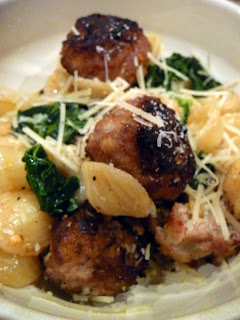To some, Spooky Tooth is an English rock band that played in the 1970s and 1980s. A version of the band is still around, singing songs like "Don't Keep Shouting at Me" and "Straight Down to the Bottom." However, for people who love craft beer, the name "Spooky Tooth" means something completely different ... it's Fat Head's Imperial Pumpkin Ale.
I had the opportunity to sample this beer when I was back in the Cleveland, Ohio area. Fat Head's Brewery and Saloon is on my very short list of places that I have to visit whenever I am back in Cleveland. The reason is simple ... Fat Head's Head Brewmaster, Matt Cole, makes some very great beers.
Most craft brewers now brew a pumpkin ale or imperial pumpkin ale. The style is somewhat of an afterthought, with the Beer Judge Certification Program lumping it in the rather broad category of "spice, herb or vegetable beer." However, as with most of Matt's beers, the Spooky Tooth transcends broad categories and stands out as a really good pumpkin beer. (This coming from someone who, until recently, never really cared for that style of beer.)
I had the opportunity to sample this beer when I was back in the Cleveland, Ohio area. Fat Head's Brewery and Saloon is on my very short list of places that I have to visit whenever I am back in Cleveland. The reason is simple ... Fat Head's Head Brewmaster, Matt Cole, makes some very great beers.
Most craft brewers now brew a pumpkin ale or imperial pumpkin ale. The style is somewhat of an afterthought, with the Beer Judge Certification Program lumping it in the rather broad category of "spice, herb or vegetable beer." However, as with most of Matt's beers, the Spooky Tooth transcends broad categories and stands out as a really good pumpkin beer. (This coming from someone who, until recently, never really cared for that style of beer.)
The Spooky Tooth pours a rich dark orange or amber color. Fat Head's describes the aroma as being "sweet pumpkin pie and savory spices with hints of sweet malt." To be sure, there is a lot of sweetness in the aroma, which is balanced with some of those pie spices, such as cinnamon, nutmeg or allspice. Many of those aromas carry into the taste of the beer. Fat Head's describes those flavors as "pumpkin up front then sweet malt, pie crust, spice, hints of brown sugar and a clean finish." To be sure, there was the flavor of pumpkin, sweet malt, spice and brown sugar. I did not have as much of a sense of the pie crust, but that did not matter. Overall, the Spooky Tooth was one of the better, if not the best pumpkin ales that I have ever tasted.
To be sure, both my beautiful Angel, Clare, and I were comparing the Spooky Tooth to other pumpkin beers. To date, none of them have matched up to this beer.
Given the beer is a seasonal, it is probably no longer in production. If bottles are still available, they can be purchased at Fat Head's in North Olmsted, Ohio or at their new production brewery in Middleburg Heights, Ohio. The beer costs about $10.99 for a four pack.
ENJOY!
To be sure, both my beautiful Angel, Clare, and I were comparing the Spooky Tooth to other pumpkin beers. To date, none of them have matched up to this beer.
Given the beer is a seasonal, it is probably no longer in production. If bottles are still available, they can be purchased at Fat Head's in North Olmsted, Ohio or at their new production brewery in Middleburg Heights, Ohio. The beer costs about $10.99 for a four pack.
ENJOY!
























